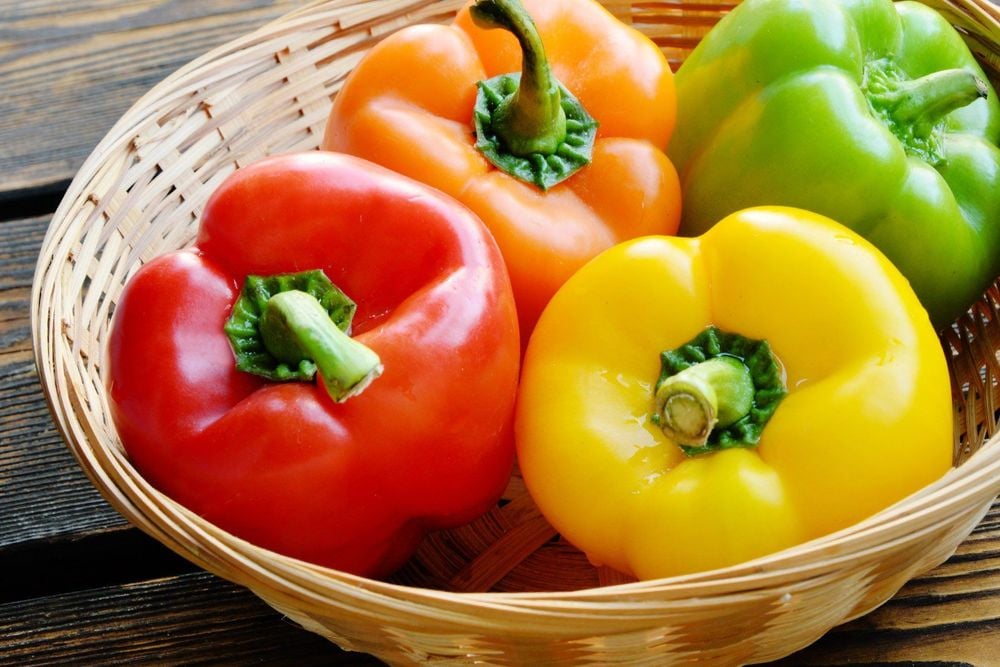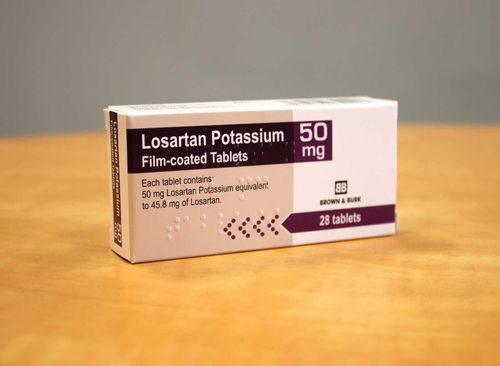This is an automatically translated article.
Bell pepper is a non-spicy chili, the shape and size is also different from hot peppers, so it can be distinguished with the naked eye. This chili variety has 3 different colors, which are green, yellow, and red with different nutritional values. So "what color bell pepper is best"? Let's find out through the following article.
1. How many colors are bell peppers?
Bell peppers have 3 common colors, which are green, yellow, and red. Each color has a different taste and processing, so the nutritional content is not the same.
Chili when fruiting is green, because the inside contains chlorophyll pigments. After the bell peppers ripen, the chlorophyll is broken down into different pigment fragments. Therefore, bell peppers when ripe can take on red, yellow,...
2. What color is the best bell pepper?
Green bell peppers have a slightly pungent taste so they cannot be eaten raw like red peppers. Therefore, green bell peppers should be used for stir-fried dishes.
So what is the effect of red bell pepper? According to analysis, red bell pepper has a sour taste, so it contains a lot of vitamin C, far exceeding the other two. 75% of the nutritional content of red bell peppers is vitamin C in its live form. When cooked, in 200g red bell pepper will provide about 200mg of vitamin C. This is an ideal number for the body's needs every day.
In contrast to red peppers, green peppers contain more vitamin A in the form of beta carotene. If you eat green chili every day, the body will be supplemented with 25-50% of the recommended vitamin A requirement. In 100g green bell pepper will provide 3.5mg beta carotene.
Vitamins A and C are both essential sources of nutrients needed by the body. They have the ability to fight the damage of free radicals which leads to slow down the oxidation process in the body. Therefore, "what color bell pepper is best", the answer is that any type is good, depending on the nutritional value it brings to the body.

"Ớt chuông màu nào tốt nhất" là thắc mắc của nhiều người.
3. Effects of bell peppers on the body
3.1. Bell peppers contain a lot of fiber, good for weight loss. Peppers are also plants, so they are considered green vegetables in the menu. Maintaining the habit of eating chili every day will give the body an abundant source of fiber. As a result, the ability to metabolize food is promoted, causing excess calories to be consumed or reduced.
However, if you are suffering from digestive diseases or unstable intestinal health, you should not eat sweet peppers. If you want to use sweet peppers when you have digestive problems, remove the skin and cook before eating.
3.2. Eating bell peppers helps protect blood vessels. Bell peppers contain a substance called flavonoid. This substance has an important role in the walls of blood vessels and is used to treat varicose veins or hemorrhoids.
Varicose veins syndrome is common in postpartum women. It is easy to see those who have veins that are too prominent on the skin. Varicose veins that emerge and gradually increase in size can be dangerous. If eating bell peppers will limit the risk and reduce invasive interventions.
3.3. Bell peppers can reduce the risk of arthritis Eating bell peppers will provide an abundant amount of vitamin C, which reduces the risk of arthritis. According to some medical analyzes, the risk of arthritis is related to the ability to absorb and provide vitamin C in each person. When you get enough vitamin C, the risk of arthritis is reduced to 30%.
Thus, every day you should add about 100g of sweet bell peppers to the menu. With this content the body will not fall into a vitamin C deficiency.
3.4. Women should eat bell peppers to prevent breast cancer Women around the world every year consider breast cancer as the enemy. This is a malignancy that plagues many women. Therefore, at the age of perimenopause, women need to take care of their health more.
According to analysis, in red bell peppers with carotenoid content, you reduce the risk of breast cancer by about 17%. Therefore, women should add red bell pepper to their daily diet.

Sử dụng quả ớt chuông hợp lý giúp đem lại nguồn dinh dưỡng tốt cho sức khỏe
3.5. Eating bell peppers protects heart health From the age of 40, people are prone to the risk of cardiovascular diseases, stroke is a typical example. If the diet after the age of 40 ensures enough vitamin B6 and folate, the risk of stroke and cardiovascular disease will also be somewhat limited.
Eating bell peppers will be a savior for this dangerous disease, because in 250ml of each type of chili will have the following amount of vitamin B6 and folate:
Chili puree: 36% of vitamin B6 needs and 10% folate. Red bell peppers: 35% of vitamin B6 needs and 7% folate. Yellow bell peppers: 20% of your vitamin B6 needs and 10% of folate. 3.6. Abundant nutrition of bell peppers for improved skin Sweet peppers contain many vitamins and nutrients that play an effective antioxidant role. Because of this, when eating sweet bell peppers, the skin will become smooth and slow down the aging process. At the same time, the wrinkles on the skin will also be limited.
In addition, when eating yellow or green peppers, collagen will be added to protect the skin. Thanks to that, bell peppers are considered a healthy food with many beneficial effects on health.
In short, “what color bell pepper is best” each contains a different source of nutrients. Each color of bell pepper has beneficial uses for human health.
Please dial HOTLINE for more information or register for an appointment HERE. Download MyVinmec app to make appointments faster and to manage your bookings easily.













